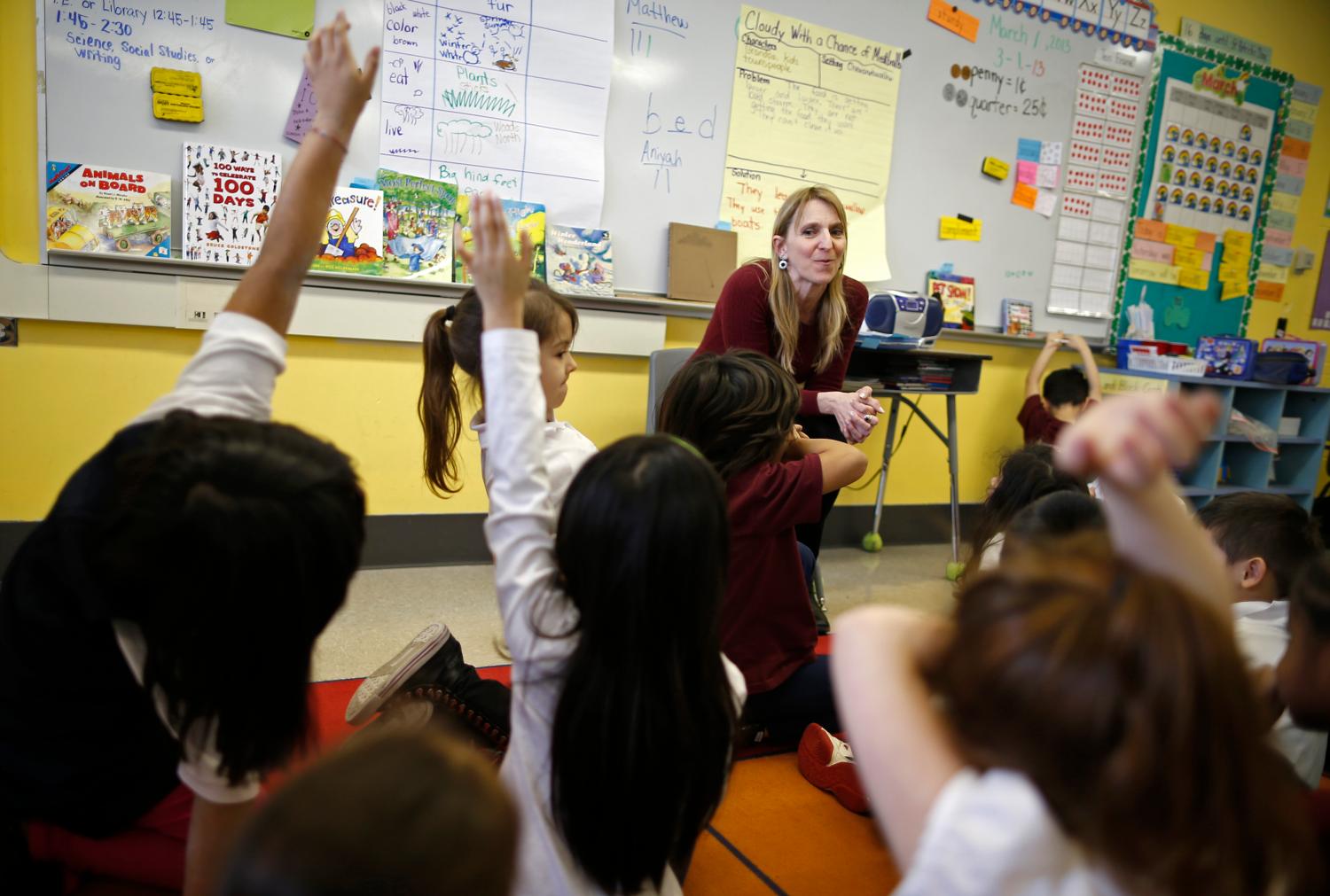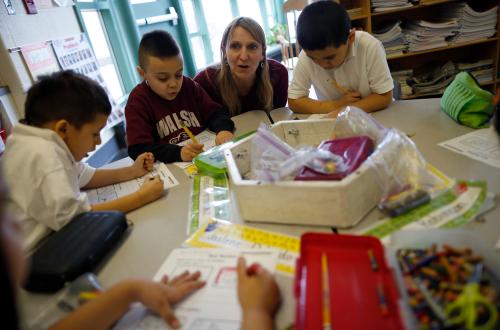The exit and churn of public school teachers have always been of concern to policymakers. Ideally, we want to keep the best and the brightest in the schools where they are needed the most and, at the very least, we want to keep them in the teaching profession more generally. According to the National Center for Education Statistics, there were 3.6 million full-time-equivalent public school teachers in the United States in 2015; 8 percent of those exited public school teaching during the following year, and another 8 percent moved to a new school. Combined, nearly one in six public teaching positions will be vacated and will likely need a replacement before the next school year.
With this level of turnover in the teaching profession, the dynamics of who leaves and who stays put can have important consequences. In other words, are schools keeping the best and the brightest in classroom? The answer matters a great deal for both education leaders and students.
A popular narrative asserts high-quality teachers have been leaving the profession in droves over the last decade or so of testing and accountability-focused reform. Yet, this myth has been challenged in recent years by empirical research on teacher retention in various states. Using panel data from Florida, Tim Sass and I examine this issue in a forthcoming article. Similar to prior research in North Carolina, Washington, Texas, and New York City, we find that good teachers, on average, are actually more likely to stay within the teaching profession.
Yet we also found that teacher mobility varies along the spectrum of teacher quality (as measured by value-added measures, or VAM estimates). To be precise, the middle 50 percent of teachers are staying put, but the top 25 percent and the bottom 25 percent of teachers are more likely to leave public school teaching (though top-performers are not as likely to leave as those performing near the bottom). Some may look at these results with optimism, inferring the departure of less-than-average teachers only benefits our students. If we assume that the replacement teacher is indeed higher quality, this argument would hold water. But the likelihood of hiring a brand new teacher who will outperform those who are leaving from day one is somewhat slim.
At the other extreme, we discovered that some of the best and the brightest teachers are also leaving Florida public school teaching. Policymakers need to pay close attention to these teachers in particular. Why do these teachers leave? Was it attributable to too much paperwork or a heavy workload? Was it due to poor school leadership? Was it due to a bad work environment?
Another important implication of uneven teacher turnover is that it will affect the distribution of teachers across different types of schools. If teachers move randomly across schools, teacher turnover will then reshuffle teachers across different schools—a somewhat benign change. Unfortunately, this is far from the truth; we found that strong teachers tend to move to schools with high-performing students, better accountability ratings, fewer African-American students, and fewer students eligible for free or reduced-price meals. We found that close to one-third of top-quartile math teachers, when they stay in the profession, transfer to schools with other top-quartile teachers. Moreover, 39 percent of bottom-quartile teachers in reading and 43 percent bottom-quartile teachers in math will stay in schools with bottom-performing teachers.
However, moving to more affluent schools is only part of the story. We also hypothesize that peer teacher quality may have an impact on teacher turnover. One possible theory comes from a well-known example of grocery checkout clerks: If a super-fast checkout clerk started working in a grocery store, we will observe that other clerks will also need to conform to this new norm of fast speed. These changes may add job stress and lead to employee turnover. On the other hand, if we believe that more productive teachers (as measured by VAM estimates) will create informal learning opportunities in the hallway and beside the water cooler, we might expect such collegiality may reduce job stress and lower turnover. We explored this in the Florida data and found some suggestive results: The top 25 percent of teachers have a lower likelihood of leaving public school teaching if peer teacher quality is also in the top quartile. This is only true in reading, but not in mathematics.
We also find some evidence of assortative matching among teachers. If an English teacher has more peer teachers with more experience, advanced degrees, and professional certification, this English teacher is less likely to move to another school across town. This at least partially implies that teachers do value these attributes of their colleagues. While we can’t answer whether these attributes also make their work environment more collegial or whether teachers then have more opportunity to learn from their colleagues, these are important questions for researchers and policymakers to ask.
It is not difficult to surmise why the best teachers are leaving teaching. Chingos and West find that high-quality K-12 Florida public school teachers leaving the profession tend to move predominantly within the education industry, to education administration or other supportive functions. In a national study, I also found that teachers with transferable skills that can be used in the publishing industry, education administration, or computer science could potentially earn more in annual salaries, ranging from a few thousand dollars to $20,000 on average.
Another reason that top-quality teachers are leaving may well be the lack of incentives within teaching for these excellent teachers. Policymakers may need to take into account that the opportunity cost of remaining in teaching is quite high for talented teachers. It may be time for us to think about individualized teacher compensation packages that will take into account some aspects of teachers’ productivity in an effort to motivate the best teachers to remain in the teaching profession.
The Brookings Institution is committed to quality, independence, and impact.
We are supported by a diverse array of funders. In line with our values and policies, each Brookings publication represents the sole views of its author(s).








